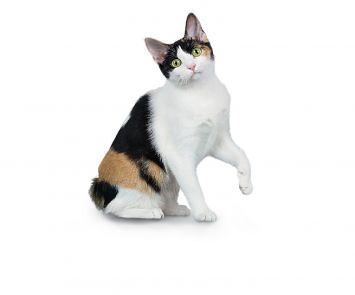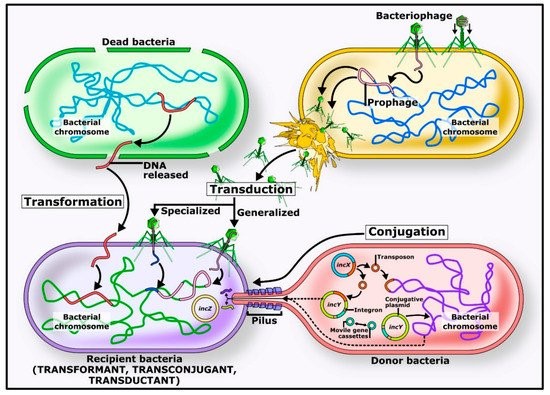Breed-related disease: Japanese Bobtail

The Japanese Bobtail is a breed of domestic cat with an unusual bobtail more closely resembling the tail of a rabbit than that of other cats. The variety is native to Japan and Southeast Asia, though it is now found throughout the world. The breed has been known in Japan for centuries, and it frequently appears in traditional folklore and art. Japanese bobtails have two coat types: long and short. The coat can be solid, bi-color, calico, or tabby, but this breed is most commonly white with colored spots, or what some call the van pattern. Both long and short coats are silky smooth, easy to groom, and low-shedding. However, although Japanese bobtails usually shed less than other breeds, they do have shedding seasons in the spring and fall and are not considered hypoallergenic. The Japanese Bobtail is active and intelligent. It’s not unusual to find him splashing his paw in water, carrying toys around, or playing fetch. He is highly curious and loves to explore. Japanese Bobtails are talkative, communicating with a wide range of chirps and meows. Their voices are described as almost songlike. These are outgoing cats who get along well with children and other pets, including dogs, and adjust to travel with ease. They love people and are often seen riding on a shoulder so they can supervise everything going on. We know that because you care so much about your cat, you want to take great care of her. That is why we have summarized the health concerns we will be discussing with you over the life of your Japanese bobtail. Dental Disease: Dental disease is one of the most common chronic problems in pets who don’t have their teeth brushed regularly. Unfortunately, most cats don’t take very good care of their own teeth, and this probably includes your Japanese bobtail. Without extra help and care from you, your cat is likely to develop potentially serious dental problems. Dental disease starts with food residue, which hardens into tartar that builds up on the visible parts of the teeth, and eventually leads to infection of the gums and tooth roots. Protecting your cat against dental disease from the start by removing food residue regularly may help prevent or delay the need for advanced treatment of dental disease. Heart Disease: Cardiomyopathy is the medical term for heart muscle disease, either a primary inherited condition or secondary to other diseases that damage the heart. The most common form, called hypertrophic cardiomyopathy, or HCM, is a thickening of the heart muscle often caused by an overactive thyroid gland. Another example is dilated cardiomyopathy, or DCM, which can be caused by a dietary deficiency of the amino acid taurine. While DCM was a big problem in the past, all major cat food producers now add taurine to cat food, so DCM is rarely seen in cats with high-quality diets today. FLUTD: When your cat urinates outside the litter box, you may be annoyed or furious, especially if your best pair of shoes was the location chosen for the act. But don’t get mad too quickly—in the majority of cases, cats who urinate around the house are sending signals for help. Although true urinary incontinence, the inability to control the bladder muscles, is rare in cats and is usually due to improper nerve function from a spinal defect, most of the time, a cat that is urinating in “naughty” locations is having a problem and is trying to get you to notice. What was once considered to be one urinary syndrome has turned out to be several over years of research, but current terminology gathers these different diseases together under the label of Feline Lower Urinary Tract Diseases, or FLUTD. Renal Failure: Renal failure refers to the inability of the kidneys to properly perform their functions of cleansing waste from the blood and regulating hydration. Kidney disease is extremely common in older cats, but is usually due to exposure to toxins or genetic causes in young cats. Even very young kittens can have renal failure if they have inherited kidney defects, so we recommend screening for kidney problems early, before any anesthesia or surgery, and then regularly throughout life. Severe renal failure is a progressive, fatal disease, but special diets and medications can help cats with kidney disease live longer, fuller lives. Source: https://www.cbvetclinic.com/client-resources/breed-info/japanese-bobtail-longhair/ https://www.cat-lovers-only.com/japanese-bobtail.html Photo crédit: https://www.petfinder.com/cat-breeds/japanese-bobtail/
Breed-related disease: Poodle

Poodles are believed to have originated in Germany, though they have been known as French dogs for many years. Their name is derived from the German word pudel, meaning “to splash in water.” Standard poodles are considered the oldest form of this breed. Their history of use as retrievers and water dogs led to the well-known poodle haircut, which was designed to protect joints from cold water temperatures. The breed share a square outline, with a long, elegant neck and a straight back. The tail is docked, but not short, so it can wave gaily. Poodles tend to have a leggy appearance and a long muzzle combined with dropped ears. They move with a springy, lively gait. The coat of the poodle is its crowning glory. Dogs competing in the breed ring must have a specific clip, with areas of extravagant hair coupled with skin tight clipping, these clips actually developed for a reason: they provided thick coat over the joints and chest to keep the dog warm while working in cold water. Intelligent, loving, loyal, and mischievous are four words Poodle enthusiasts commonly use to describe the breed’s personality. Poodles are among the smartest of breeds, but that intelligence can translate into stubbornness. Even so, they can make wonderful therapy dogs. Their empathetic nature and joy in engaging with people make them naturals for visiting with people in nursing homes, hospitals, and schools . Poodles are active dogs, but the smaller dogs need less room and less exercise. Toy and Miniature Poodles are often the companions of people who are less active and can be extremely happy as lap dogs and TV-watching buddies. Just be sure their busy minds have enough to keep them out of mischief. Poodles love to learn and want to please. Trick-training suits their heritage as circus dogs quite well. Teach them to pick up the newspaper, carry a bottle to the recycling bin, and bring your slippers . All dogs have the potential to develop genetic health problems, just as all people have the potential to inherit a particular disease, Poodles are generally considered to be a very sturdy breed with few health issues. Addison’s Disease : Also known as hypoadrenocorticism, this extremely serious condition is caused by an insufficient production of adrenal hormones by the adrenal gland. Most dogs with Addison’s disease vomit, have a poor appetite, and lethargy. Because these signs are vague and can be mistaken for other conditions, it’s easy to miss this disease as a diagnosis until it reaches more advanced stages. Gastric Dilatation-Volvulus : Commonly called bloat, which occurs when gas gets trapped inside a dog’s stomach. The stomach twists as much as 180 degrees, stopping the flow of digestion and causing the gas to build up pressure. It’s an incredibly painful disorder with a 20% mortality rate even with surgical intervention. Deep-chested breeds like the standard Poodle or Great Dane are especially prone to experiencing bloat. Hip Dysplasia : A dog’s hip operates on a ball-and-socket joint. When the socket is over- or under-developed, or when the ligaments holding the two together are weak, the ball can become dislodged. This constant dislocation and relocation will wear down the joint’s integrity and cause hip dysplasia. Hypothyroidism: Hypothyroidism is caused by an under active thyroid gland. It’s thought to be responsible for conditions such as epilepsy, hair loss, obesity, lethargy, hyperpigmentation, pyoderma and other skin conditions. Epileptic : Epileptic seizures in dogs are as shocking for canines as they are for humans. Dogs will often seem confused or panicked about what’s happening, and the sight of your dog seizing can be terrifying to watch. When this happens, you need to remain calm and focus on helping your dog. https://dogtime.com/dog-breeds/poodle#/slide/1 https://en.wikipedia.org/wiki/Poodle
Antibiotic Resistance: Horizontal Gene Transfer

[vc_row][vc_column][vc_column_text] Antibiotic Resistance: Horizontal Gene Transfer Robert Lo, Ph. D, D.V.M. Antimicrobial compounds, including both naturally and chemically synthesized compounds, have been one of the most important inventions to combat infections. Penicillin was the first natural antibiotic to be discovered from Penicillium fungus by Alexander Fleming in 1928. Following the discovery of penicillin, researchers started search for more antibiotics from soil microorganisms, including bacteria and fungi. Streptomycin produced by Streptomyces griseus was found in 1943. Most antibiotics in use today originated from the phylum Actinobacteria with nearly 80% of actinobacterial-derived antibiotics produced by soil-dwelling bacteria of the genus Streptomyces (Barka et al., 2016). Currently, antibiotics are classified into different groups based on their mechanism of antimicrobial activity. The main groups are: inhibit cell wall synthesis (β-lactams and glycopeptides), depolarize cell membrane (lipopeptides), inhibit protein synthesis (aminoglycosamides, chloramphenicol, lincosamides, macrolides, oxazolidinones, streptogramins, and tetracyclines), inhibit nucleic acid synthesis (Quinolones), inhibit fatty acid synthesis (platensimycin), and inhibit metabolic pathway (sulfonamides and trimethoprim). With so many groups of antibiotics to treat pathogens, it seems that antibiotics would win the battles against the infection. However, the marked increase of antibiotics resistance pathogens have exceeded new drug discovery, and this resistance occurs shortly after a new drug is approved for treatment. Therefore the emergence and spread of antibiotic resistance among pathogenic bacteria has raised the concerns for public health worldwide. How did antibiotics resistance pathogens appear so quickly? More importantly, how did resistance develop? Antibiotic resistance is ancient and it is expected results of the interaction of many organisms with their environment. Since most antimicrobial compounds are produced by bacteria, it is nature that those antibiotic-producing bacteria also contain self-resistance mechanisms against their own antibiotics. D’Costa et al. identified that most Streptomyces are resistant to an average of seven to eight antibiotics, including newly developed and clinically important therapeutics (D’Costa et al., 2006). In addition, it is believed that non-antibiotics producing environmental bacteria have evolved resistance mechanisms to overcome the action in order to survive via co-existence with antibiotic-producing bacteria. Researchers also identified the presence of gene-encoding resistance to β-lactams, tetracycline, and glycopeptide antibiotics in metagenome samples of 30,000-year-old permafrost (D’Costa et al., 2011). Analysis of the vancomycin resistance gene cluster in this metagenome also revealed conservation of gene sequence and synteny with modern resistance clusters in the clinic as well as protein function and structure. Resistance to antibiotics occurs either by mutation or by acquisition of resistance genes via horizontal gene transfer. It is believed that horizontal gene transfer is the most important factor in the current pandemic of antimicrobial resistance. Though the mechanisms has long been existence, the rate of antibiotic resistant gene spread and the number of resistant strains has increased tremendously over the past few decades because of selective pressure through antibiotic use. The use and misuse of antibiotics in medicine, agriculture, and aquaculture has been linked to the emergence of resistant bacteria (Cabello, 2006; Economou & Gousia, 2015). In addition, the majority of consumed antibiotics are excreted unchanged, and are then introduced into the environment directly or through waste streams (Sarmah et al, 2006). As a result, waste streams become hotspots for the spread of antimicrobial resistance because of the introduction of antibiotic selection pressure into commensals and pathogens (Graham et al., 2011). These increasing environmental exposure to antibiotics has significantly increased antibiotic resistance genes of pathogenic bacteria, especially with the tetracycline resistance gene being 15 times more abundant now than in the 1970s (Knapp et al., 2010). In addition, increasing selection pressure has accelerated bacterial horizontal gene transfer process, increasing the number of resistome elements which reside mobile DNA compared to the pre-antibiotics era (Datta and Hughes, 1983). Role of horizontal gene transfer in spread of antibiotic resistance genes Conjugation Conjugation is the process by which one bacterium transfers genetic material to another through direct contact. In conjugation, DNA is transferred from one bacterium to another. After the donor cell pulls itself close to the recipient via cell surface pili or adhesins, DNA is transferred between cells. Plasmid- mediated conjugation is considered the most prevalent method of horizontal gene transfer mechanisms in nature (Volkova et al., 2014). The acquisition of novel genes by plasmids through mobile genetic elements such as transposons (Babakhani and Oloomi., 2018) or integrons (Akrami et al., 2019), and their ability to replicate in a wide range of hosts, made them perfect vectors for the spread of AMR. Some of known plasmids-mediated antibiotic resistance gene transfer events are the spread of carbapenemase blaCTX-M extended-spectrum β-lactamases (ESBLs), which can hydrolyze β-lactams (Ramos et al., 2013), and spread of quinolone resistance gene (Robicsek et al., 2006). Transposons are found in both gram negative bacteria, including Tn1, Tn3, Tn5, Tn9, Tn10, Tn21, Tn501, Tn903, Tn1525, Tn1721, Tn2350 and Tn3926, and gram positive bacteria, including Tn551, Tn917, Tn4001, Tn4451, and Tn4003. Resistance gene cassettes most frequently associated with class 1 integrons are streptomycin-spectinomycin resistance genes and trimethoprim resistance genes. Class 1 integrins has been found in gram negative bacteria, including Escherichia, Klebsiella, Aeromonas, Enterobacter, Providencia, Mycobacterium, Burkholderia, Alcaligenes, Campylobacter, Citrobacter, Stenotrophomonas, Acinetobacter, Pseudomonas, Salmonella, Serratia, Vibrio, and Shigella (Partridge et al., 2009; Xu et al., 2011 ), and in gram positive bacteria, including Corynebacterium, Aeromonas, Staphylococcus, Streptococcus, Enterococcus, and Brevibacterium (Nandi et al., 2004; Xu et al., 2010). Class 2 integrons have been found in Salmonella, Enterobacteriaceae, Enterococcus, Acinetobacter, and Pseudomonas (Machado et al., 2008; Xu et al., 2010; Xu et al., 2011). Class 3 integrons have been reported in Escherichia, Citrobacter, Klebsiella, Salmonella, Pseudomonas, Acinetobacter, Alcaligenes, and Serratia (Rowe-Magnus et al., 2001; Ploy et al., 2003). Class 4 integrons have been linked to Pseudomonas, Vibrionaceae, Xanthomonas, Shewanella, and other proteobacteria (Clark et al., 2000; Rowe-Magnus et al., 2001). Transformation In transformation, a bacterium takes in DNA from its environment, often DNA that has been shed by other bacteria. If the DNA is in the form of a circular DNA called a plasmid, it can be copied in the receiving



